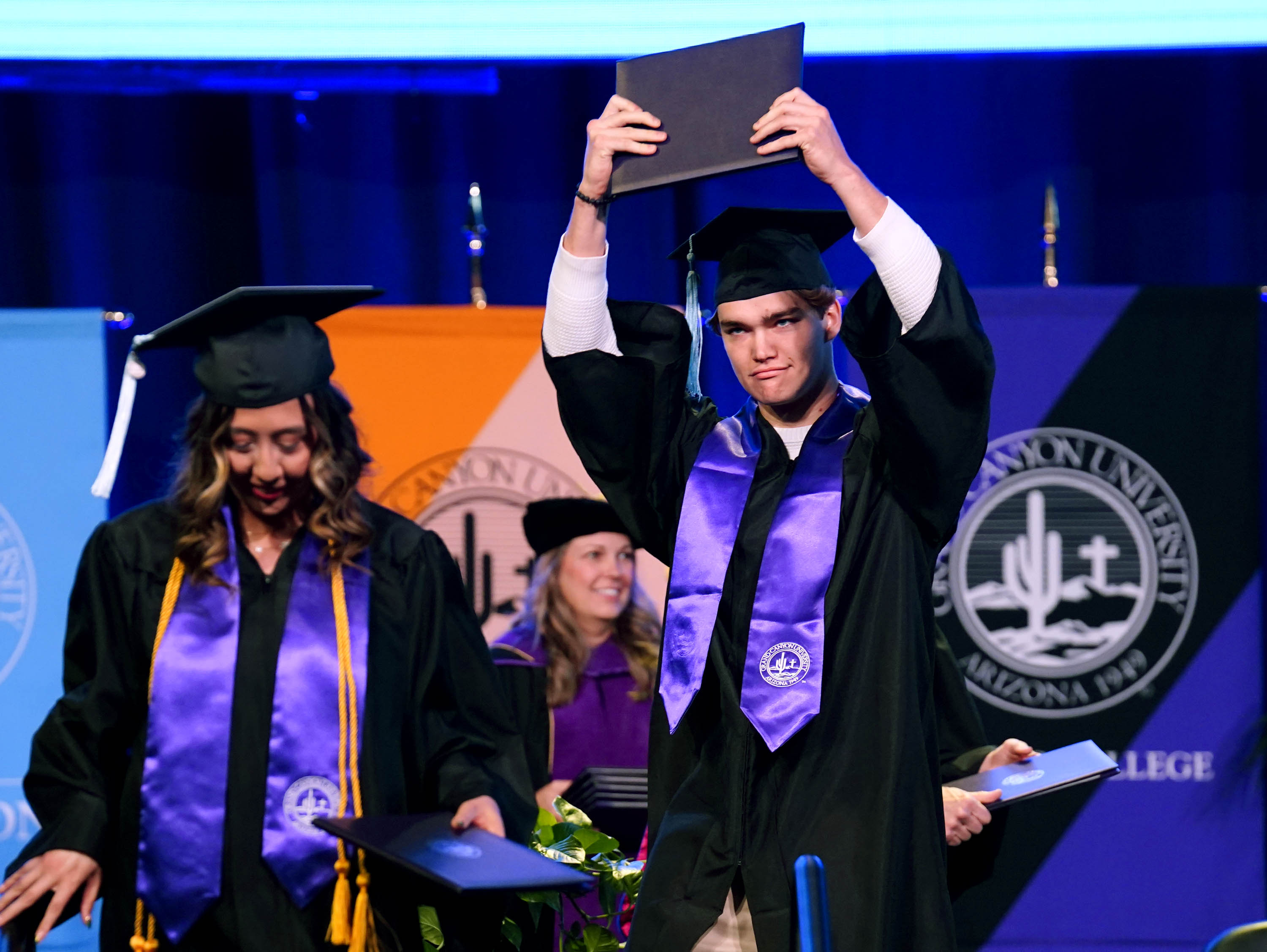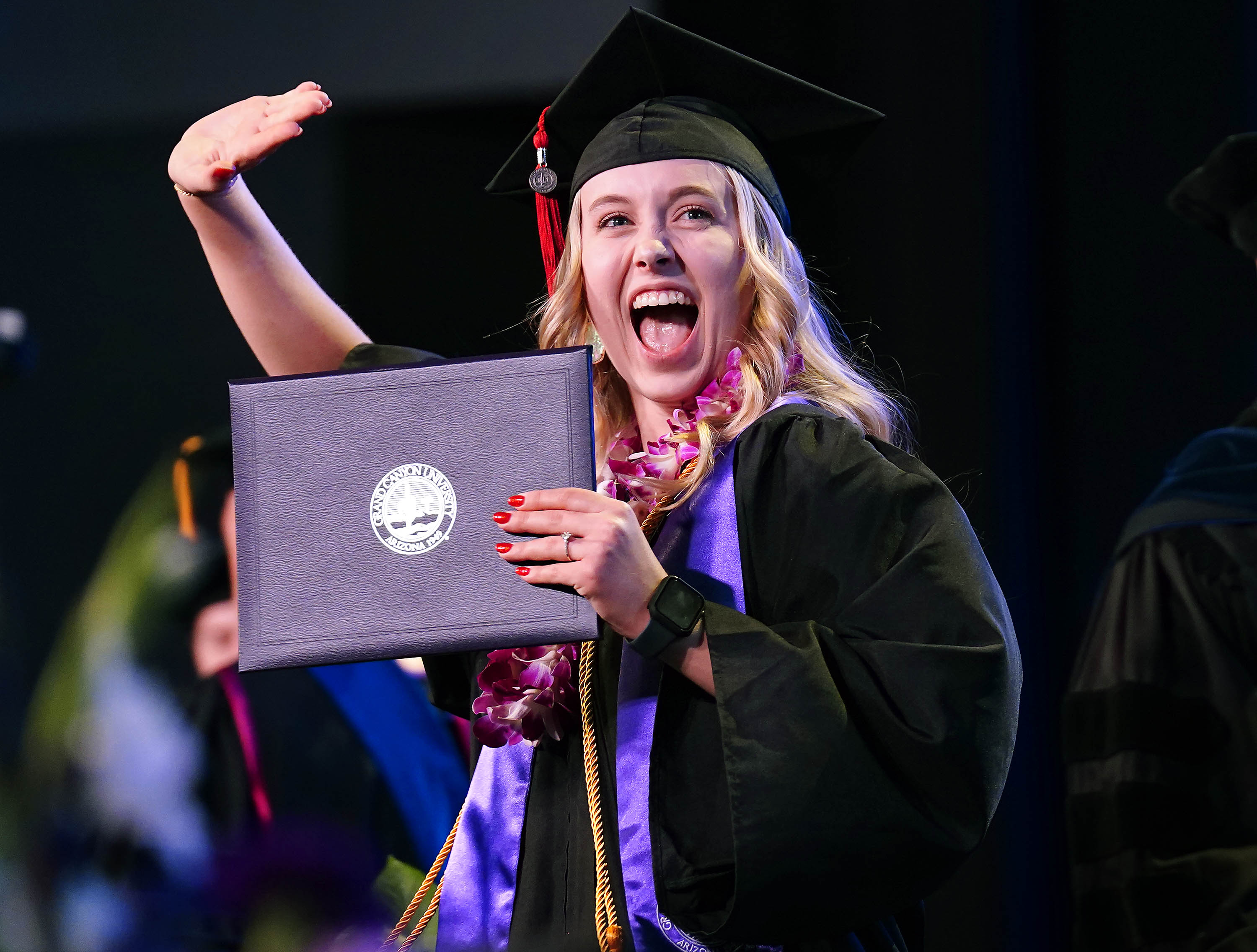
(Editor's note: This story is from the May 2016 issue of GCU Today Magazine. To view the digital version of the magazine, click here.)
By Rick Vacek
GCU Today Magazine
One of the most interesting dynamics of the Grand Canyon University campus is that, despite all the growth of recent years, it still takes only a few minutes to walk from one side to the other. Such intimacy breeds inclusiveness.
And nowhere is this geography lesson more clearly mapped out than in the rise in the number of student clubs and organizations, from 22 to more than 100 in just three years if you count all the teams in the burgeoning club sports program. Numerous studies have shown that students who are engaged beyond the classroom perform better academically, but GCU has taken this idea to the next level — it’s the ace of clubs.
How did this happen? Simple. “We encourage them to dream big,” said Moyo Harris, GCU’s clubs and organizations coordinator. All someone has to do to start a club is fill out paperwork, get a faculty/staff sponsor, petition for the support of at least 50 other GCU students, and get approved by the Associated Students of GCU board.
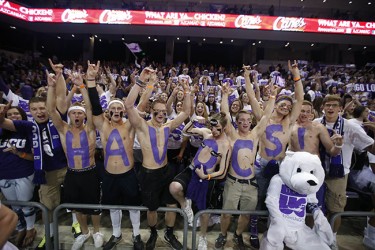
But there’s more to it than that. The clubs are about students helping each other, the community and even the world, and you see evidence of that time and again as you delve into their activities. These aren’t just time-fillers, they’re life-savers.
Take, for example, how getting in a club might have convinced senior Kendall Argust she was making the right decision in switching careers.
The commuter student had flunked biology — kind of a problem when you want to become a pharmacist — and had switched to accounting when one of her instructors, Dr. Donna DeMilia, suggested one day in class that students might want to consider joining what now is known as the Accounting Society.
So Argust went to a meeting and had what she calls “an ‘aha’ moment that I belonged there.” Before long she was attending a student leadership conference as the group’s secretary, and that was it — she was hooked. Being in the club gave her a reason to stay on campus after making the long drive from her home in Surprise, Ariz., and then going to class. She shudders to think what would have happened if she hadn’t followed DeMilia’s advice.
“I think I would have changed to something different. I think I would have fallen back onto something in general biology or something along those lines,” she said. “And I don’t think I would have been as involved in school — obviously not.”
It makes you wonder how many GCU students feel the same way.
Havocs show their heart
Many GCU clubs spread their positive influence in multiple directions. To see what that’s like, look no further than the inspiration of what has become the University’s most well-known student organization, the Havocs student cheering section.
Most people know them as those lovable crazies who paint their faces and bounce and scream and turn basketball games in GCU Arena into must-see entertainment, but they make noise in another, even more important way. They also do “Havocs with Heart,” the group’s outreach program whereby members fan out into the community to bring their good cheer.
The new Havocs president for the 2016-17 school year, Steve Hunsaker, said he was “blown away” the first time he went to one of their events at 6 a.m. on a Saturday and saw a large group of typically enthusiastic students doing their Havocs thing — and these are volunteers, folks.
“That’s the GCU way,” he said. “That’s what sets us apart from a lot of other student sections in the country.”
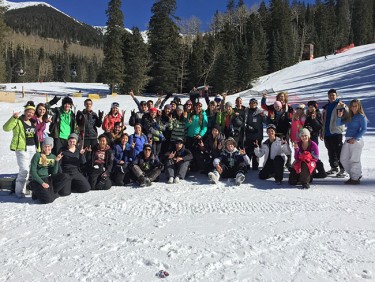
But the Havocs are just one of many student organizations that have become distinctive.
Certainly the most adventurous group — literally — is the Outdoors Club, which is in just its second year but has become so popular, it had to stop trying to attract more students to its events. There regularly is a long waiting list for every event even though it schedules one or two trips weekly.
If you think that all they do is hiking, hold on to your backpack. They’ve gone canyoneering and rappelled down waterfalls. There was the spring break trip to the beach at Santa Monica, then the wilds of Yosemite National Park. Snowboarding. Paintballing. Whitewater rafting. They’ve explored a cave in Tucson. They even have gone skydiving.
Oh, there’s plenty of hiking and backpacking, of course. Utah is a popular destination. They went from rim to rim in the Grand Canyon. And all of the local trails are at play.
“We try to change it up a lot just so that everyone can experience something new,” said the club’s president, Stefan Dudzinski.
They set up a system of carpools that reimburse the driver for gas, and they keep costs down by getting group discounts and providing inexpensive gear whenever possible. For example, they were able to get lift tickets and rentals for $40 on the snowboarding trip, and Dudzinski, who comes from an outdoorsy family, regularly rents out his own gear for a fraction of what it normally would cost.
“We try to keep the trips under $20,” he said.
You never know what to expect on these trips, and not just because of what’s out in nature. The caving trip took them to a lake at the bottom of the cave, and one participant decided to get baptized right then and there.
Exploring faith
For those who want something spiritual but would prefer to stay out of caves, there’s the Defenders Club, which meets on Monday nights to discuss Christianity.
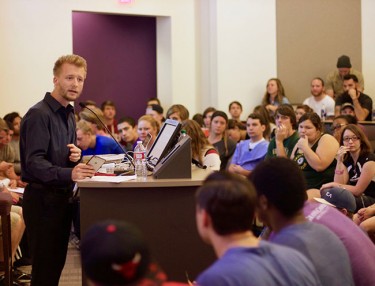
It was begun in the fall of 2013 by someone who knows more than a little bit about the subject — senior Matthew Mittelberg, whose father, Mark, is a prominent Christian apologetics author and speaker. Matthew is headed to the Oxford Centre for Christian Apologetics in the fall.
“I think a lot of people, before they come to college, they have the idea that faith has to be taken blindly,” Matthew said. “In reality, there’s a lot of evidence and reasoning that supports the Christian faith. We examine some of those evidences and some of those arguments to show that Christianity is true.”
About 50 students pack a room at the weekly meetings to hear such subjects as what historical evidence there is that Jesus rose from the dead, how Christianity compares to Islam and why Christians are pro-life. Mittelberg also arranges for visits by big-name outside speakers, such as his father, Lee Strobel and Dr. Nabeel Qureshi, who converted from Muslim to Christian.
The meetings attract students of all types of backgrounds, including Buddhists, Muslims, Jews and atheists. In fact, Mittelberg said, a Jewish man was so impressed by Qureshi’s talk, he decided to become a Christian. Everyone is welcome as long as they’re open to a good discussion about the issues.
Does that diversity benefit the club?
“It really does,” Mittelberg said. “People who have those different backgrounds can say, ‘Coming from the outside, this is the way I had seen it.’ It really helps us to sharpen our witness so that we’re not having a group think kind of situation where only Christians are talking to Christians and using our jargon and vernacular. The mission of apologetics and Christians is to reach the world and to share our faith.”
Game on
Another huge club — actually, a conglomeration of a bunch of smaller groups — is club sports, which has grown to 22 teams and 450 athletes in just a few years. Associate Athletic Director Dan Nichols expects to have even more teams and 200 more participants for the 2016-17 academic year.
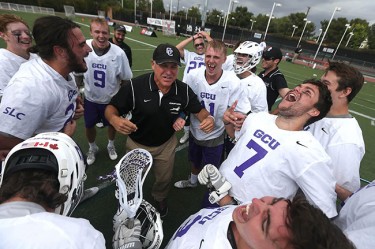
“We’ve got one of the top club programs in the nation,” he said. “I’ve got people calling me asking, ‘How are you doing it? What are you doing?’ and really wanting to look at our program.”
The program drew national attention last year when GCU won the Men’s Collegiate Lacrosse Association championship, but what amazes Nichols is the interest in baseball (there are three teams) and hockey and the development of women’s lacrosse.
“Women’s lacrosse started with nine players at a park four years ago,” he said. “They’re out there learning the game, and then a couple of years later I see them out there playing a real competitive game against an Arizona State or somebody like that, and it feels real good to watch.”
How does someone sign up to play? Simple — go on the website (clubsports.gcu.edu), find the sport and call the coach, whose phone number is listed there. You need to have some ability, of course, but the opportunities are available.
Health care, anatomy assistance
Among the University’s most established and successful clubs is AzHOSA, which primarily caters to pre-med, pre-dentistry and physical therapy students. “Anything that falls under the health umbrella,” said senior Caitlyn Garmer, the club’s vice president.
With almost 400 members, it’s one of the most active HOSA chapters in the country. Its main goal is to get members ready for graduate school by offering tips on resumé, interview and exam preparation and helping them gain the community-service hours they need. There also are two major HOSA competitions every year, and in the most recent one the GCU chapter brought home 12 gold medals from the State Leadership Conference in Tucson, Ariz.
“It’s a great opportunity. You’re able to meet other people in your major and get involved and get a friend group,” said Garmer, who met her future roommate through AzHOSA. “Especially coming in as a freshman, you come in not knowing many people. The people running the meetings have been in your situation before. They’re willing to help you make friends and learn what you need to do.”
The club is big on community-service projects, such as helping with the Leukemia and Lymphoma Society’s Light the Night Walk. But the focus is the meetings, which cover such topics as nutrition, the Affordable Care Act and how to do a suture.
And here’s an example of how clubs interact. The suturing demonstration was overseen by the Anatomy Club, which was formed last October and already has 70 members. It is designed to provide peer mentors and tutors for students in anatomy- and science-related classes and also to work on projects (yes, one of them is dissection training).
“Student engagement is the golden thread that will hold your academic experience together and get you across the finish line in a way that will be transformational.”Pastor Tim Griffin, GCU dean of students |
But it’s for anyone, said its president, Thomas Varkey, “as long as they bring something to the table and we can do something to help them, too.” For example, one Christian studies major joined the club because she wanted to see how God put the body together.
Help for those who need it
There also is a club for healing a troubled mind. To Write Love on Her Arms is a national nonprofit that aims to help people struggling with addiction and depression, and Hanna Klinefelter decided to create a GCU chapter last fall when she sent out a tweet that she planned to light a candle for suicide prevention and asked the Twitterverse if anyone was interested in joining her. The response was overwhelming.
Klinefelter was so moved because, two years ago, one of her best friends committed suicide. Klinefelter’s response was to not only transfer from North Dakota State University, near her home in Detroit Lakes, Minn., to GCU; she also changed her major from English education to counseling with an emphasis on substance abuse and addictions.
But her new club’s meetings are hardly a downer. Sure, the group is there to support those who need it, but it includes people of all types.
“We have people who are just happy and want to bring joy to people,” she said. “They have a lot of love to give, and they use our club to express that to people who need the love. It really makes for a good dynamic.”
Such is the dynamic of club life across the GCU campus. It’s vital.
“Student engagement is the golden thread that will hold your academic experience together and get you across the finish line in a way that will be transformational,” said Pastor Tim Griffin, GCU’s dean of students.
And, come August, a whole new set of students will have a chance to experience what the transformation is all about. For the first time, Welcome Week will include a special pep rally led by the Havocs, and keeping the spirit-filled athletic success going will be a focus.
“It’s ultimately in the freshmen’s hands to make it even bigger,” Hunsaker said. “The momentum we have going into next year is huge, and the freshmen are going to be a huge part of that.”
They no doubt will notice the intimacy of the campus, but it’s up to them to be included. It could be the difference between feeling lost and finding their proper destination.
Contact Rick Vacek at (602) 639-8203 or [email protected].

